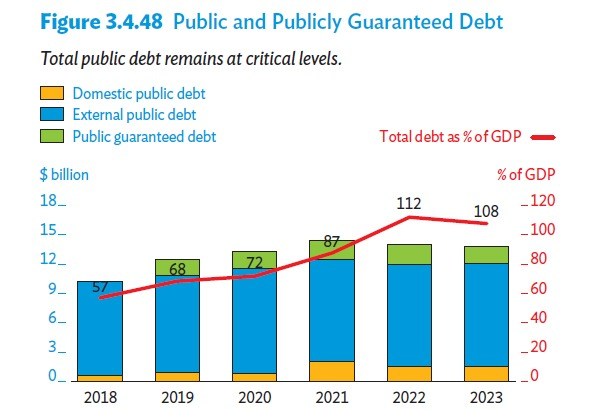KPL
The Lao People's Democratic Republic (Lao PDR) is facing significant economic challenges in 2024 despite robust growth across developing Asia and the Pacific.

(KPL) The Lao People's Democratic Republic (Lao PDR) is facing significant economic challenges in 2024 despite robust growth across developing Asia and the Pacific.
While the region's growth outlook has been raised to 5.0% for the year, up from 4.9% in April, Laos is grappling with inflationary pressures, currency depreciation, and high public debt.
According to the Asian Development Bank Outlook September 2024, the economic situation in Laos remains delicate due to the continued depreciation of the kip and high inflation. Currency losses have been particularly significant in the country, as external debt concerns and debt service payments strain the national economy.
Between January and August 2024, the kip depreciated by 6.1% against the Thai baht and by 7.5% against the US dollar, with the spread between commercial and parallel market exchange rates widening to 9.1%.
The ADB report says that despite efforts by the Bank of Lao PDR to control the depreciation by raising its 1-week interest rate from 8.5% in February to 10.5% in August and tightening forex management, the currency's downward trend has persisted.
This depreciation has exacerbated inflation, which remains elevated compared to other Southeast Asian economies. Regional inflation forecasts for 2024 were revised down to 2.8%, but Laos continues to experience higher rates due to economic and fiscal vulnerabilities.
Public Debt and Fiscal Pressures
One of the critical factors behind the economic strain in Laos is the country's high public debt. Total public and publicly guaranteed debt stood at 108% of GDP in 2023, a slight decline from 112% in 2022. However, the burden of external debt service payments is placing enormous pressure on the government’s finances. The ratio of external debt service to total government revenue surged from 27% in 2022 to 43% in 2023, crowding out crucial public spending.
In response to these financial challenges, the Lao government has sought deferrals in scheduled loan service payments, amounting to US$1.9 billion between 2020 and 2023. Despite these efforts, the country continues to face liquidity issues and limited foreign exchange reserves. As of June 2024, official reserves were recorded at US$1.8 billion, barely enough to cover two months of imports.
Boost from Tourism and Trade
However, not all aspects of Laos’ economic performance in 2024 have been negative. The country’s tourism sector has shown strong signs of recovery, supported by the Visit Laos Year 2024 initiative and its role as the ASEAN Chair. International tourist arrivals reached 2.1 million in the first half of 2024, representing a 26% increase compared to the same period last year. While this figure is still 5% below pre-pandemic levels, the steady recovery of the tourism sector is a positive sign for the economy.
Moreover, the railway service between Laos and China has been instrumental in boosting the country’s attractiveness as a regional transit hub. Passenger traffic increased by 41.3%, while cargo volumes rose by 31.9% in the first half of 2024. This surge in transport services helped Laos achieve a small trade surplus of US$2 million for the first five months of the year.
KPL